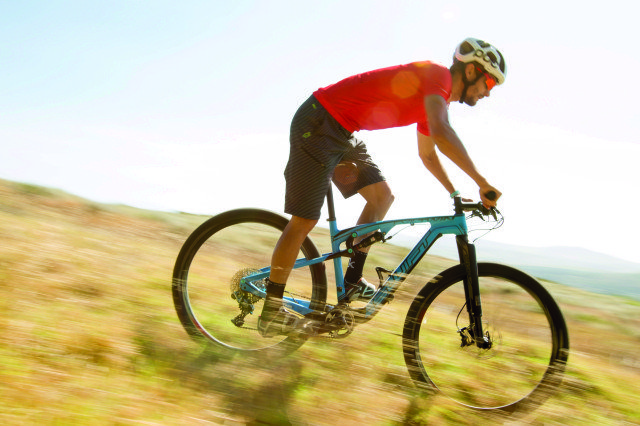How to Ride Your Bike in Hot Weather
Your guide to staying cool and riding strong in hot weather all summer long.

Your guide to staying cool and riding strong in hot weather all summer long. – By James Herrera

Any variety of excess warmth can sabotage your cycling performance if you’re not ready for it. Here are six things to keep in mind about cycling in hot weather as the mercury climbs.
Acclimate Yourself
“The biggest hot-weather mistake cyclists make is riding in the heat without preparation,” says Stacy Sims, PhD, founder of Osmo Nutrition. If you don’t acclimate to hot-weather riding, you won’t reap as many benefits from your workout and you’ll increase both perceived effort and potential for injury. Instead, ride early or late in the day, when it’s coolest, and use your down time to get used to the heat—try Bikram “hot” yoga or a sauna.
Protect Yourself
A sunburn does more than fry your skin, Sims says. It contributes to fatigue and increases your metabolism. The latter might sound like a good thing, but it also increases fluid needs, which can be a problem on a hot day when you’re already struggling to stay hydrated. Do everything you can to prevent sunburn: Always wear sunscreen; choose jerseys, shorts, and arm skins with built-in sun protection; and wear a cap under your helmet to shield your head.
Plan Ahead
To prevent your drink from quickly turning the temperature of warm tea, freeze one bottle at half full and another at the three-quarter mark before topping them off. (Mountain bikers: Put ice cubes into your hydration pack.) For longer rides, figure out in advance where you can restock with cold beverages.
Get Wet
While it may be tempting to toss ice cubes down your jersey, don’t. Sims advises against it: “Ice against the skin causes blood vessels to constrict, which shoots hot blood back to your core.” If your core temperature climbs too high, performance and health can suffer. Instead, pour cool water over your neck and forearms, or wipe them with a cool, damp towel.
Ease Up
Don’t try to maintain the same pace or power you’d put out on a milder day, says cycling coach Derick Williamson. “Once the sum of the temperature in Celsius plus the relative humidity gets above 40 degrees, we dial power ranges back by about 10 to 15 watts,” he says. “If you’ve been doing 15-minute intervals at 220 to 240 watts, that becomes 205 to 225, or we may reduce the efforts to 10 or 12 minutes.” If you’re racing in steamy conditions, cut your warm-up time in half or more.
Hydrate Right
In the days leading up to a big ride, increase your consumption of watery fruits and vegetables (such as watermelon and grapes), Sims says. Sodium helps your body hold on to the fluid you’re drinking, so sip an electrolyte beverage during your ride. Aim to drink at a rate of 10 to 12 millilitres per kilogram of body weight, about a 600ml bottle every hour for a 68-kilogram rider. Postride, “a protein-based recovery drink will rehydrate you faster than a carbohydrate-only one,” Sims says. Protein pulls water with it when it travels to muscles. If you opt for plain water after a ride, pair it with a snack or meal that contains protein, carbohydrates, and sodium.
Pro Tip
On hot race days, professional Cycling BMX athletes wear cooling vests and immerse their hands in a bucket of cold water. During warm-ups or between races, the vest lowers skin temperature, delays the onset of dehydration, and reduces the heart’s workload, all factors that increase performance.
